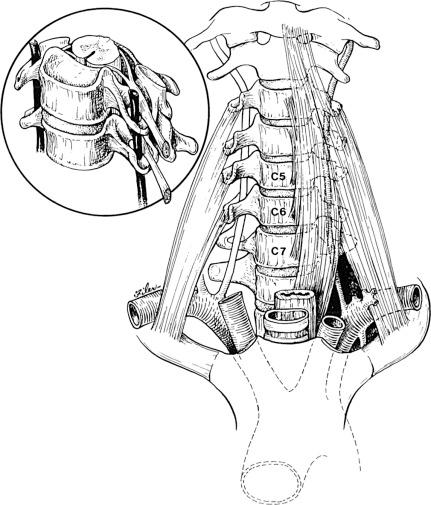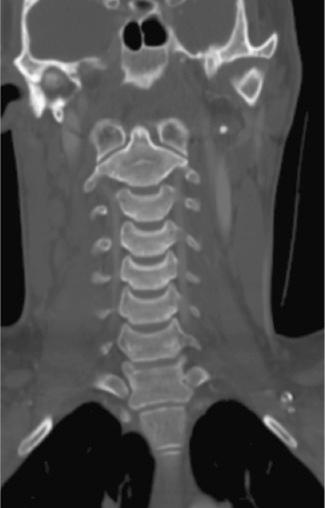Physical Address
304 North Cardinal St.
Dorchester Center, MA 02124
|
|
|
|
|
|
|
|
Vertebral artery injury during surgical procedures of the cervical spine is a rare but devastating complication. The various procedures commonly performed by spine surgeons place the artery at risk in different ways. The vertebral artery is most susceptible to injury anteriorly at C7, laterally from C3 to C7, and posteriorly at C1 and C2. A complete understanding of normal and aberrant anatomy, strict preoperative evaluation of imaging studies, and meticulous surgical technique can minimize these risks. Despite taking all possible precautions, inadvertent injury to this vessel can still occur, thus making an understanding of treatment options following an injury a necessity for all surgeons performing these procedures. Should an injury occur, implementation of an appropriate treatment algorithm can mitigate the morbidity of this feared complication. The purpose of this chapter is to review the vertebral normal and anomalous vertebral anatomy, identify points of risk during specific cervical spine procedures, and provide a general treatment algorithm for management of intraoperative vertebral artery injuries.
The vertebral arteries are branches of the first portion of the subclavian arteries. These paired arteries are generally unequal in size, with the left the larger and dominant of the two. The typical course of the vertebral artery allows for its classic division into four segments: V1 to V4. The first segment (V1) starts with branching of the vertebral artery from the subclavian artery and follows as it courses anterior to the transverse foramen of C7 and into the transverse foramen of C6. The second segment (V2) includes the section of the artery as it passes through the successive vertebral foramina from C6 to C1. V3 comprises the portion from the superior aspect of the arch of the atlas to the foramen magnum, whereas V4 extends from the foramen magnum to the confluence with the contralateral vertebral artery; together, they form the basilar artery ( Figs. 50-1 and 50-2 ).


Various anatomic relationships throughout the course of the vertebral artery are important to the spine surgeon. In the V2 region, the artery normally remains 1.5 mm or more lateral to the uncovertebral joint. Further, the bony architecture within the region of the V2 segment dictates a mildly convergent course of the arteries through this section; the mean interforaminal distance at C6 is approximately 29 mm compared with 26 mm at C3. Similarly, the mean distance from the medial edge of the longus colli to the medial edge of the vertebral artery decreases from 11.5 mm at C6 to 9 mm at C3. Whereas the transverse foramina of the subaxial spine are ring shaped, the transverse foramen of C2 is an angulated canal bordered by the pedicle and lateral mass. Its inferior and lateral openings allow the artery to deviate 45 degrees laterally before continuing its ascent to enter the transverse foramen of C1.
The V3 segment becomes important to the spine surgeon mostly during the posterior approach to the atlantoaxial joint. As the artery exits the foramen of C1, it travels posteriorly and medially inside the vertebral artery groove on the superior aspect of the atlas. At a distance ranging from 8 to 18 mm from the midline, the artery abruptly changes course, traveling anteriorly and superiorly toward the foramen magnum.
Become a Clinical Tree membership for Full access and enjoy Unlimited articles
If you are a member. Log in here